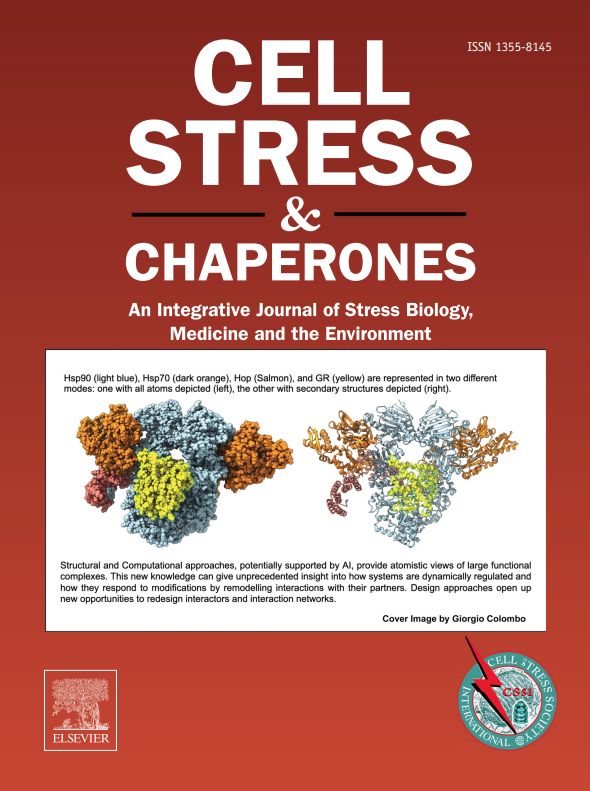The role of Atp2a2-mediated calcium imbalance and endoplasmic reticulum stress in hydrocortisone-induced neurotoxicity
IF 3.2
3区 生物学
Q3 CELL BIOLOGY
引用次数: 0
Abstract
Glucocorticoids (GCs), as commonly used anti-inflammatory and immunosuppressive drugs, may induce neurotoxicity with long-term use, although the specific mechanisms remain unclear. This study utilized zebrafish as a model to investigate the mechanisms and potential intervention targets of hydrocortisone (HC)-induced neurotoxicity. Transcriptome analysis revealed that HC exposure significantly downregulated the expression of Atp2a2 (encoding the endoplasmic reticulum calcium pump SERCA2). Functional experiments confirmed that HC disrupts cellular calcium homeostasis: endoplasmic reticulum Ca²⁺ levels decreased, mitochondrial Ca²⁺ accumulation occurred, accompanied by mitochondrial membrane potential depolarization, increased reactive oxygen species (ROS) generation, and cell apoptosis. Additionally, fluorescent signals in brain and spinal cord neurons were weakened, and significant decreases in movement distance, time, and average speed were observed. Intervention experiments with the GR antagonist RU486 and the SERCA2 activator demonstrated that both could partially restore calcium homeostasis, reduce ROS and apoptosis, and improve motor behavior. The findings revealed that HC disrupted calcium homeostasis by downregulating Atp2a2, activating endoplasmic reticulum stress, and triggering mitochondrial dysfunction, ultimately leading to neuronal damage and behavioral abnormalities. SERCA2 may serve as a potential target for alleviating GC-associated neurotoxicity, and this study provides experimental evidence for elucidating its mechanisms.

atp2a2介导的钙失衡和内质网应激在氢化可的松诱导的神经毒性中的作用。
糖皮质激素(GCs)作为常用的抗炎和免疫抑制药物,长期使用可能引起神经毒性,但具体机制尚不清楚。本研究以斑马鱼为模型,探讨氢化可的松(HC)诱导的神经毒性的机制和潜在的干预靶点。转录组分析显示,HC暴露显著下调了Atp2a2(编码内质网钙泵SERCA2)的表达。功能实验证实HC破坏细胞钙稳态:内质网Ca 2 +水平降低,线粒体Ca 2 +发生蓄积,线粒体膜电位去极化,活性氧(ROS)生成增加,细胞凋亡。此外,脑和脊髓神经元荧光信号减弱,运动距离、时间和平均速度明显降低。GR拮抗剂RU486和SERCA2激活剂的干预实验表明,两者都能部分恢复钙稳态,减少ROS和细胞凋亡,改善运动行为。研究结果表明,氢化可的松通过下调Atp2a2来破坏钙稳态,激活内质网应激,触发线粒体功能障碍,最终导致神经元损伤和行为异常。SERCA2可能作为减轻gc相关神经毒性的潜在靶点,本研究为阐明其机制提供了实验证据。
本文章由计算机程序翻译,如有差异,请以英文原文为准。
求助全文
约1分钟内获得全文
求助全文
来源期刊

Cell Stress & Chaperones
生物-细胞生物学
CiteScore
7.60
自引率
2.60%
发文量
59
审稿时长
6-12 weeks
期刊介绍:
Cell Stress and Chaperones is an integrative journal that bridges the gap between laboratory model systems and natural populations. The journal captures the eclectic spirit of the cellular stress response field in a single, concentrated source of current information. Major emphasis is placed on the effects of climate change on individual species in the natural environment and their capacity to adapt. This emphasis expands our focus on stress biology and medicine by linking climate change effects to research on cellular stress responses of animals, micro-organisms and plants.
 求助内容:
求助内容: 应助结果提醒方式:
应助结果提醒方式:


